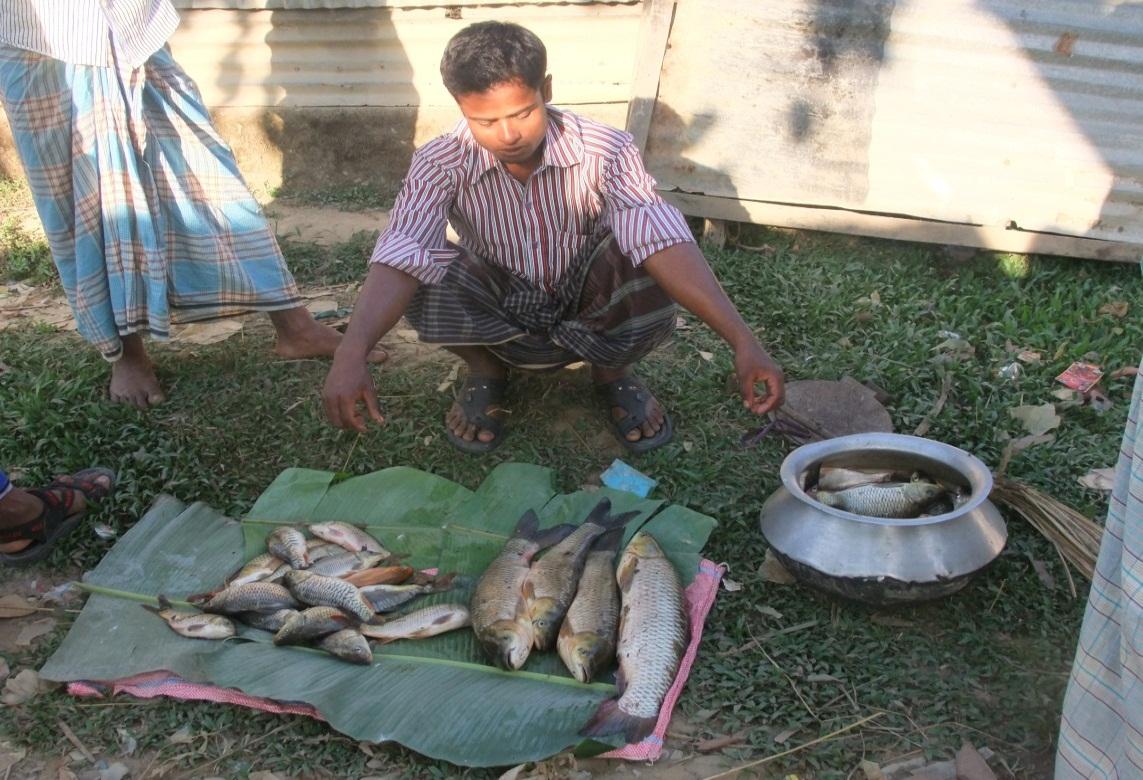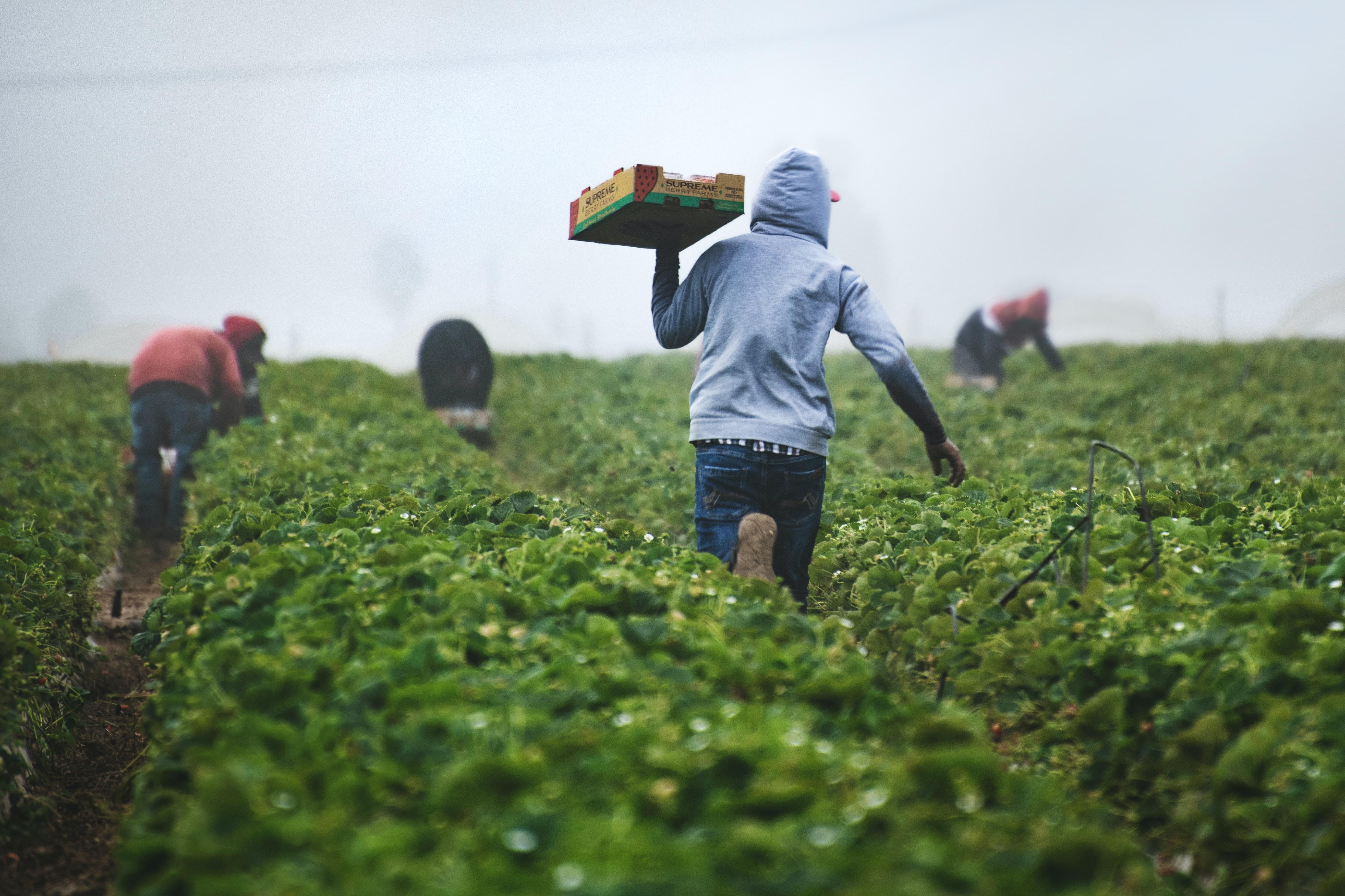 Nutrition and Food Security Situation in Bangladesh
Nutrition and Food Security Situation in Bangladesh
Despite the significant strides in many Millennium Development Goals (MDG) targets, food and nutrition security is still a daunting challenge for Bangladesh. Adequate diets are still not affordable for many people, and the prevalence of malnutrition in Bangladesh is among the highest in the world. About 7 million children under 5 suffer from malnutrition, with 41 percent stunted, 36 percent underweight, and 16 percent wasted. Children also suffer from high rate of micronutrient deficiencies, particularly vitamin A, iodine and iron, and 24 percent of mothers are malnourished (BDHS, 2011). This malnutrition costs Bangladesh $1 billion per year in terms of economic productivity loss (Howlader et al., 2012), and has called government and partners to identify and address these serious challenges. Bangladesh’s national Seventh Five Year Plan 2016–2020 (GOB, 2015), Country Investment Plan (GoB, 2015) and Poverty Reduction Strategy Paper (GoB, 2005) are examples of plans that seek to address malnutrition, and projects and programs of major international development partners such as the United States Agency for International Development (USAID) and the UK Department for International Development (DFID).
Role of Fish and Fish Products in Household, Women and Child Nutrition and Food Security
Micronutrient deficiencies can lead to adverse consequences in growth and cognitive development of children, reproductive performance of women and labour productivity of man and women. Low dietary diversity and lack of sufficient amounts of micronutrient-rich foods such as fish, meat, fruits and vegetables consumption are often the cause of such malnutrition. Seafood is an important source of protein and healthy fat, as well as essential micronutrients, such as long-chain omega-3 fatty acids, essential amino acids, vitamins (D, A and B) and minerals including calcium, iodine, zinc, iron and selenium. Moreover, fish boosts the bioavailability of iron and zinc from the other food items. In Bangladesh fish is the most important supplier of many of these nutrients, and is the most frequently consumed animal-source food across all social strata providing about 60% of the dietary protein (Toufique and Belton, 2014; FAO, 2016).

My IMMANA Research Objectives
Agriculture has the potential to improve household, maternal and child health and nutrition through multiple pathways, but the mechanism by which agriculture can improve nutrition is not yet conclusive. My IMMANA research aims to investigate the causal association between farm diversification (with special focus on fisheries diversification) and household, maternal and child food and nutrition security in Bangladesh, as well as the link between livestock ownership and household, and maternal and child food and nutrition security in Nepal. To achieve my IMMANA research objectives I am working with IFPRI-Bangladesh, WorldFish-Bangladesh, Nutrition Innovation lab Bangladesh and Nepal (Poshan) as collaborator in various projects.
Methodology for My IMMANA Research Objectives
As an economist, my aim is to establish the casual link between interventions and impacts, so I will use panel data and panel econometric research methods. Most of the related studies in developed and developing countries have used cross-sectional data, which makes it difficult to account for unobserved factors that could bias research findings, preventing causal linkages from being drawn. For example, it is suspected that more progressive and efficient households are more likely to diversify their farm and will have livestock, in which case the estimated farm diversity and livestock ownership effect would suffer from systematic selection bias. To overcome this problem I will use a fixed-effects (FE) estimator. Our models will relate key independent variables that express various measures of farm diversification and livestock ownership to outcome variables that express a variety of household, nutritional and anthropometric characteristics.
Learning Experiences
So far, my experience has been valuable. The beauty of the IMMANA program is its interdisciplinary nature. As an economist, I bring one approach to my work that is bolstered by working with my host mentor, who is a nutritionist. Our sharing of expertise greatly adds value to shape our ideas and final research outputs. I have also had the opportunity to connect with several institutions, researchers and research projects across an enormous disciplinary scope that will certainly increase my research network and enrich my career path.
 Next Steps
Next Steps
My IMMANA research will result in two discussion papers that will be shared with the IMMANA community and further presented on local and international forums (e.g. ANH-Academy week) and host and home mentor institute seminar series. I am also involved with several related projects exploring other dimensions of food and nutrition security. At the Nutrition Innovation Lab-Bangladesh, for example, I am working on how multiple-program exposure is associated with improved outcomes in nutrition and health, as well as a study looking at the cost-effectiveness of adoption of new drying and storage technologies to enhanced seasonal availability and quality of nutrient-rich products in Bangladesh. Additionally, I am working with my home mentor on a high frequency survey project investigating how seasonality affects food and nutrition security of the vulnerable household members. Finally, my WorldFish AquaLINC project will work on characterization of production, marketing and consumption including intra-household consumption of fish in Bangladesh.
The nexus between agriculture and nutrition in developing countries including Bangladesh is complex requires that researchers utilize complex thinking in approaches, and the IMMANA program is helping enable me to do just that.
Contributed by: Dr. Abu Hayat Md. Saiful Islam, Development Economist based in Bangladesh and Round 2 IMMANA Fellow
References
BDHS (2011). Bangladesh Demographic and Health Survey 2011. Dhaka, Bangladesh and Calverton, Maryland, USA: NIPORT, Mitra and Associates, and ICF International.
FAO, (2016). The State of World Fisheries and Aquaculture 2016. Contributing to Food Security and Nutrition for All. FAO Fisheries and Aquaculture Department. Food and Agriculture Organization of the United Nations, Rome.
GoB, (2005). Bangladesh: Poverty Reduction Strategy Paper. General Economics Division Planning Commission. Government of People’s Republic of Bangladesh, Dhaka.
GoB, (2015). Bangladesh Country Investment Plan: A Road Map Towards Investment in Agriculture, Food Security and Nutrition. Food Division, Ministry of Food and Disaster Management. Government of People’s Republic of Bangladesh, Dhaka.
GoB, (2015). Seventh Five Year Plan 2016–2020. Planning Commission, Ministry of Planning, Dhaka: Government of the People’s Republic of Bangladesh.
Howlader, S. R., Kavita, S., Ferdousi, B., Dipika, P., Sommerfelt, E. A., & Tara, K. (2012). Investing in nutrition now: A smart start for our children, our future. Estimates of benefits and costs of a comprehensive program for nutrition in Bangladesh, 2011–2021. PROFILES and Nutrition Costing Technical Report. Washington, DC: Food and Nutrition Technical Assistance III Project (FANTA), FHI 360.
Toufique, K. A., & Belton, B. (2014). Is aquaculture pro-poor? Empirical evidence of impacts on fish consumption in Bangladesh. World Development, 64, 609-620.
Photos
Header: A retailer is selling fish in a village open market
Top: Dr. Saiful along with his research assistant collecting data from fish producers
Middle: An experiment under WorldFish-AquaLINC project to develop nutrient enrich Tilapia where Dr. Saiful is looking for consumer and market demand for such Nutrient enrich Tiliapia in Bangladesh
Bottom: An experiment under WorldFish-AquaLINC project to develop smaller size Tilapia for the poor where Dr. Saiful is looking for consumer and market demand as well as economic feasibility for such smaller size Tiliapia in Bangladesh






